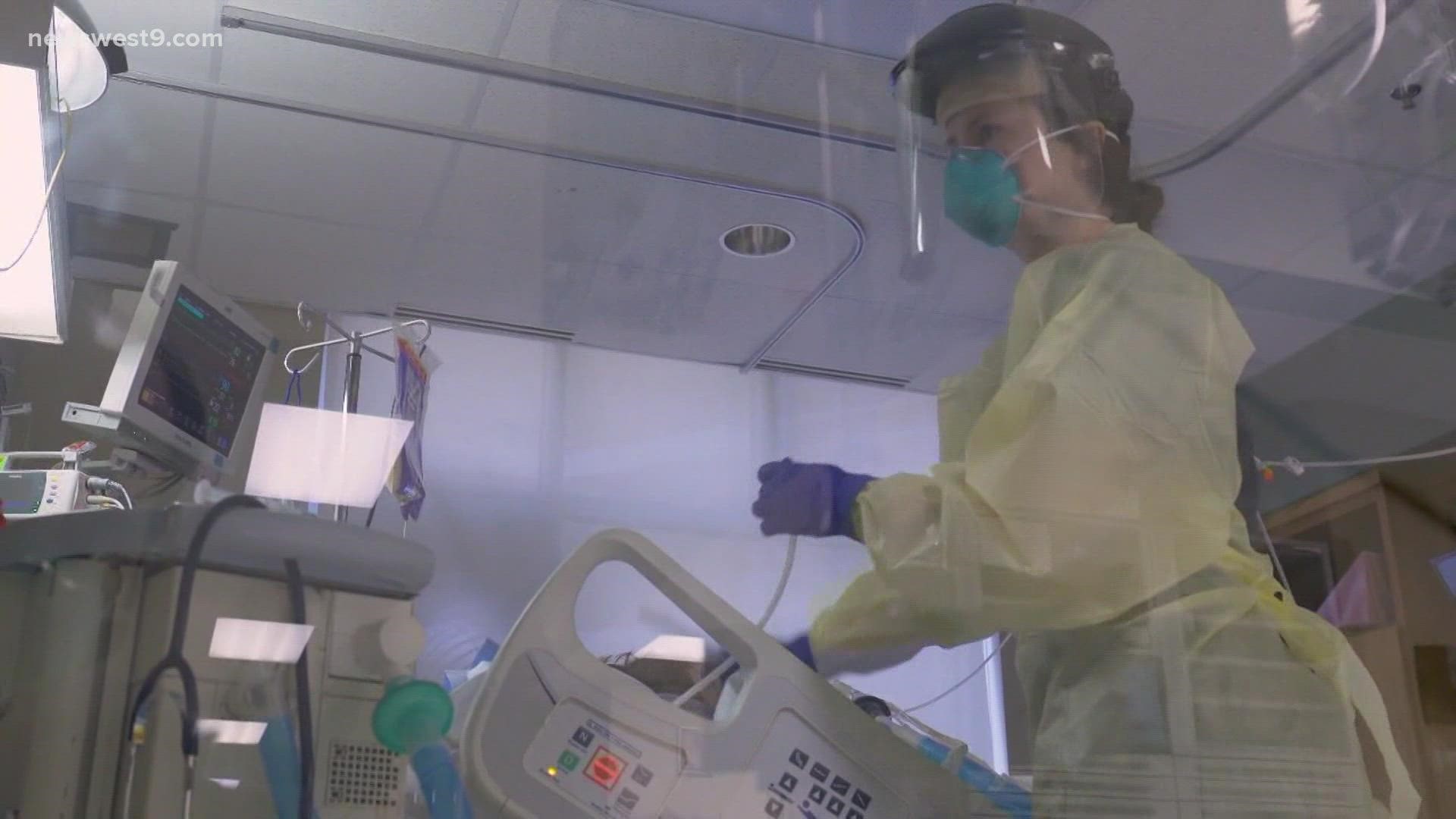ODESSA, Texas — Déjà vu-that is what this wave of COVID-19 feels like for Midland Memorial and Medical Center hospital.
“It’s even worse than déjà vu…this is nightmare déjà vu," Trevor Tankersly, MCH Public Relations, said.
This COVID wave is different.
The world is not locked down, mask mandates have been banned by Governor Abbott and there is a vaccine out there that helps to reduce the likelihood and severity of catching the virus.
But the vaccine only works if people here get it. Only about 30-40% percent of the population in Midland and Ector County have been vaccinated.
“When we battled this the first time…we saw a steady incline in numbers, we didn’t see this dramatic of an increase this quickly," Tankersly said. "We also had the hope of a vaccine so we were working towards a goal.”
Right now, MCH has 68 COVID19 patients. MMH has 70.
If the hospitals stay at this same pace for the next two weeks they will exceed the previous all-time high, 328 COVID hospitalizations, set back in November of 2020.
“These hospitals will be at a strain and most likely not be able to put any more patients into beds," Tankersly said. "Now emergency departments will stay open but they would be crowded and full...simply put we don’t have the staff or bed availability to have that many COVID patients in addition to the normal patients we have on an everyday basis.”
According to hospital leaders, most of the COVID-19 patients are unvaccinated.
“It spreads quicker, and it spreads way easier and it spreads way more quickly among the patients who are unvaccinated... That is who we are being overwhelmed with at the hospital," Tankersly said.
As for those in the hospital who have not gotten the vaccine, the narrative is the same.
“According to our nurses and critical care staff, we have had people up there say 'yeah you know, I should have gotten the vaccine, this is real' and at that point sadly it’s just too late," Tankersly said.
The University of Texas made a COVID-19 modeling consortium for all communities in Texas.
It uses hospitalization and cellphone mobility data to analyze and make predictions for Texas’ 22 Trauma Service Areas.

